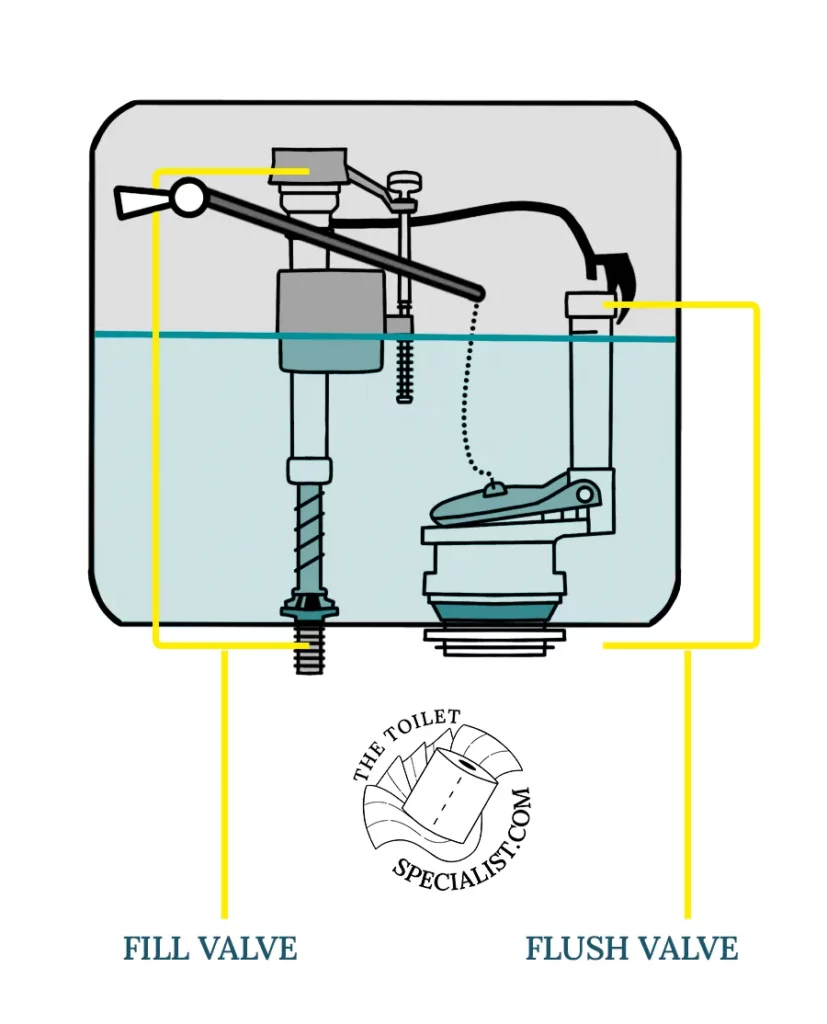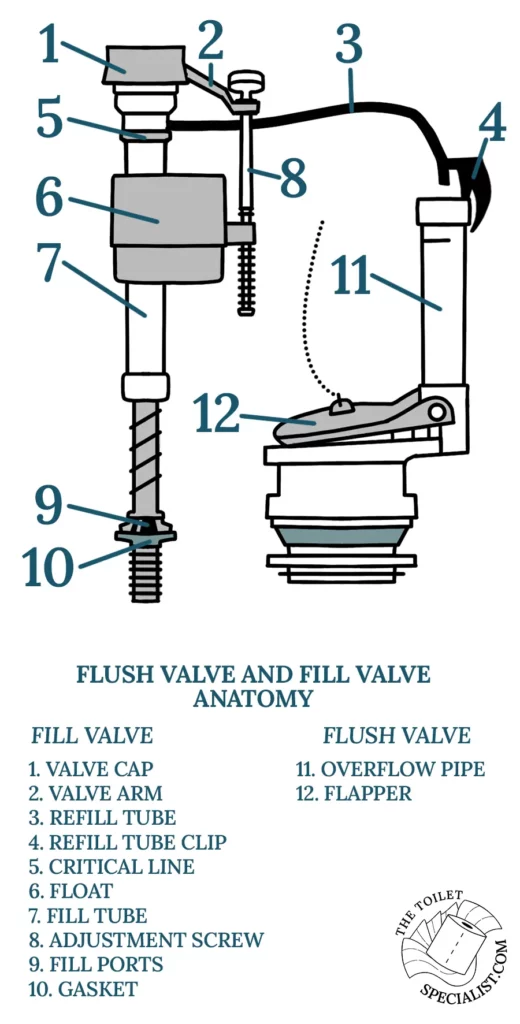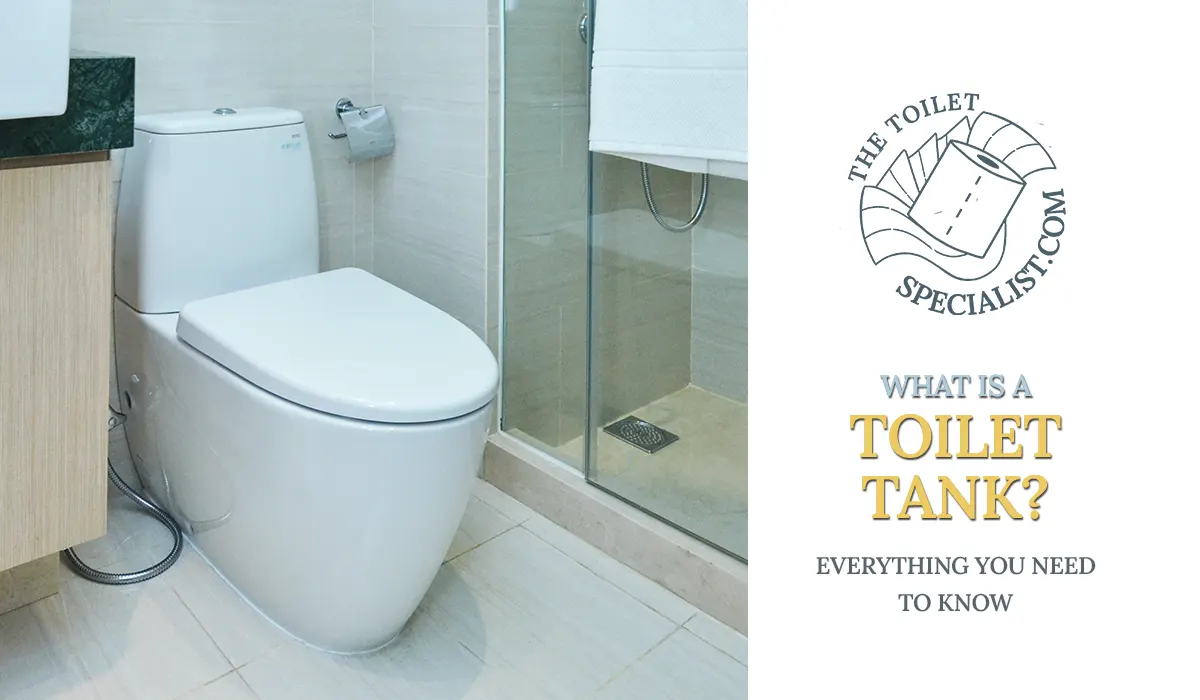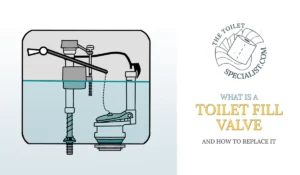When shopping around for toilets you might wonder what exactly is a toilet tank. And what does it do?
A toilet tank is a unit that is located at the backside of the toilet bowl. The toilet tank contains a flushing mechanism that allows you to flush. The tank also functions as a reservoir: it holds water that’s ready to be flushed at any time. Without a toilet tank, you’d just have an empty useless pot no different than a bucket.
Keep reading to find out how a toilet tank works, what parts are in it, and how to solve common issues!
What is the difference between a toilet bowl and a toilet tank?
The difference between a toilet bowl and a toilet tank is their function: the toilet tank stores water and holds the mechanisms needed to flush. The toilet bowl is the part you sit on and urinate and defecate in. The bowl itself does not have any mechanisms. Both the tank and bowl work together.
Technically you can still use your toilet when your toilet tank doesn’t work. After you use the toilet you should fill up a bucket with water, and drop the water from a height into the bowl.
Due to the force, any waste will be flushed down.
How does a toilet tank work?
A toilet tank is a crucial component of the toilet system. It works together with the toilet bowl to effectively dispose of waste. Its operation may seem straightforward, but it involves a series of clever mechanisms that ensure a smooth and efficient flushing process.
A toilet tank works by having its fill valve work together with its flush valve. When you activate the flush handle, a chain or lever inside the tank is pulled. This action lifts a rubber or plastic flapper valve at the bottom of the tank, allowing water to flow rapidly into the toilet bowl. As water rushes into the bowl, it creates a siphon effect, which pulls waste and wastewater down the drain and into the sewer system.
The force of the siphon, combined with gravity, ensures that the toilet is thoroughly emptied.
Once the flush is complete, the flapper valve reseals the tank, preventing water from continuously flowing into the bowl. Simultaneously, a fill valve opens to refill the tank with fresh water.
This refill process also involves a float mechanism that rises with the water level and signals the fill valve to shut off once the tank reaches its optimal capacity.
This means that the following mechanisms work together in your toilet tank:
- Fill Valve
- Flush Valve

If you’d like to know more about this, go ahead and read: What is a toilet fill valve and how to replace it.
Can you buy a toilet tank separate from the bowl?
You can buy a toilet tank separate from the bowl. This way you are able to replace the tank without replacing and buying an entire toilet. However, you only need to do this when the tank is severely damaged and the bowl is not.
Alternatively, you can also opt to just change the fill valve and other components that sit inside the tank.
But before you do that you need to ask yourself:
- Is it better to replace the entire toilet?
- Do I need to replace the tank or just the parts inside the tank?
- Are the costs of fixing it lower than replacing the entire toilet?
what is a toilet without a tank called?
People who ask about toilets without a tank are generally asking about tanks built into a wall. This way, you don’t see the tank at all even though it’s still there. These are wall-mounted two-piece toilets.
However, there are actual tankless toilets on the market. They do, however, require different kinds of plumbing.
A toilet without a tank operates differently from traditional toilets. Instead of a tank, it relies on a direct water supply from a pipe in the wall. When you flush, a valve is activated, releasing a powerful surge of water directly into the bowl to carry away waste.
However, since there’s no tank to store water, tankless toilets typically require higher water pressure and may produce a louder flush. Despite these differences, their functionality in waste disposal remains similar to traditional toilets.
What are the two types of toilet tanks?
The two types of toilet tank commonly used are the gravity-fed tank, which relies on the force of gravity to flush waste. The second type is the pressure-assisted tank, which uses compressed air to enhance flushing power. A gravity-fed tank stores water at a higher level than the bowl allowing water to rush down, creating a syphon effect that clears water.
The pressure-assisted tank, which is less common in residential bathrooms, has a pressure vessel inside that stores air and water under pressure. When you flush, the air pressure forces water into the bowl with more force, resulting in a robust flush.
These kinds of tanks are especially useful for commercial and high-traffic restrooms.
What is a toilet tank used for
As mentioned before:
The primary function of a toilet tank is to store water until it’s needed for flushing. The tank sits behind the bowl, either bolted or merged to the bowl, or it is built into a wall behind the toilet bowl. The tank holds the mechanisms that allow you to flush. In some cases, the flush handle is attached to the tank as well.
Fun fact: A toilet that has its tank separate from the bowl is called a two-piece toilet. A tank that is merged into the bowl is called a one-piece toilet.
Here you can read the pros and cons of both one- and two-piece toilets and which one to choose.
Toilet tank parts replacements
You don’t always have to replace or fix your tank. Sometimes you just need to replace or fix what’s inside. In a toilet tank, several parts may require replacement over time due to wear and tear.
Here are the most common parts you may need to replace in your toilet tank:
- Flapper
- The flapper is a rubber or plastic valve at the bottom of the tank that opens to allow water into the bowl during a flush. It’s prone to deterioration or warping, leading to leaks. Replacing a worn flapper can prevent water wastage.
- Fill Valve
- The fill valve, also known as the ballcock or float valve, regulates the tank’s water level. Over time, it can develop leaks or fail to shut off completely. Replacing a malfunctioning fill valve ensures proper water control.
- Flush Handle
- Although not located inside the tank, the flush handle can become loose or corroded, leading to difficulties in flushing or a continuous running of water. Replacing a faulty flush handle is a simple fix.
- Gaskets and Seals
- Various gaskets and seals, such as those around the flush valve or between tank components, can deteriorate, causing leaks. Replacing these seals is essential to prevent water seepage.
- Tank Bolts and Washers
- Tank bolts secure the tank to the bowl. If they corrode or deteriorate, they can lead to leaks. Replacing damaged bolts and washers helps maintain a watertight seal.
- Flushing Mechanism
- Sometimes, the entire flushing mechanism, which includes the flush valve, overflow pipe, and associated components, may need replacement if it fails to function correctly.

Regular inspection and timely replacement of these common toilet tank parts can extend the life of your toilet and prevent water waste and potential damage to your bathroom.
Toilet tank price
Generally, the price of a toilet tank lies between $70 – $160. This of course depends on the brand and style. If you are unable to install the tank yourself you need to take into account plumbing costs as well. Look at brands like TOTO, American Standard, and Kohler. These are the most common ones in the U.S.
Here you can find a list of average plumbing rates. Although plumbing rates heavily depend on your location as well.
Best toilet tanks
Did you know you can buy toilet tanks on Amazon? No, this isn’t a joke. They even are from reputable brands like TOTO, Kohler, and American Standard.
Here are the best toilet tanks on Amazon:
- American Standard 4188A104.020 Cadet Pro Toilet Tank
- American Standard 4000.101.020
- KOHLER K-4436-0 Wellworth
- American Standard Cadet 3 Triangle shaped tank
Disclaimer: TheToiletSpecialist.com is not responsible for any damage caused to your toilet and surroundings by (wrongly) interpreting information found on this site. Please seek custom advice from a professional to evaluate your current situation.
This article may contain affiliate links at no extra cost to you. AF links help support this blog so that it can exist and expand for years to come!





